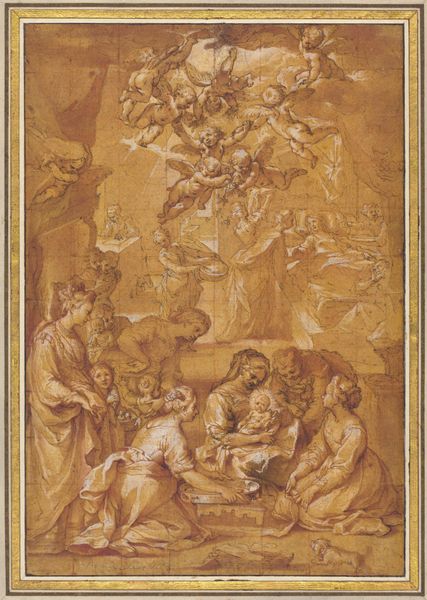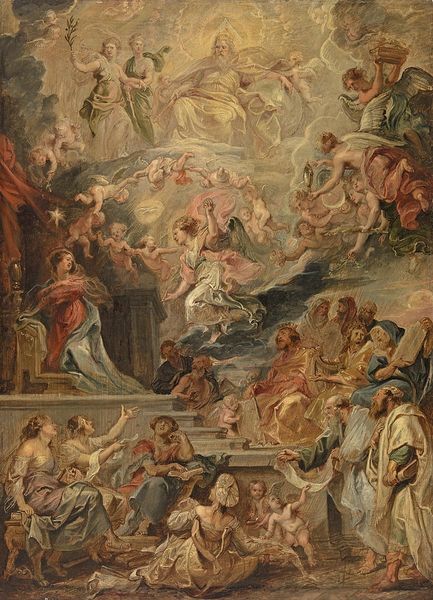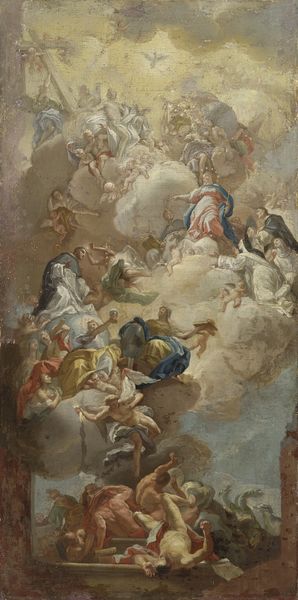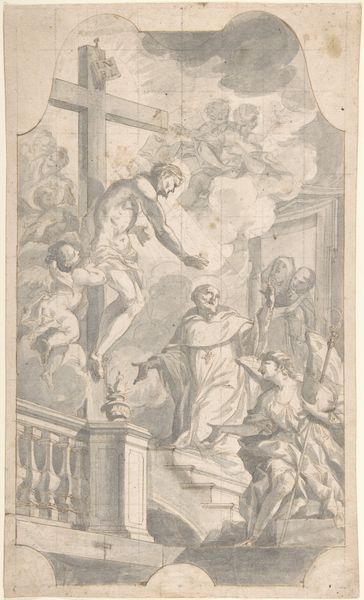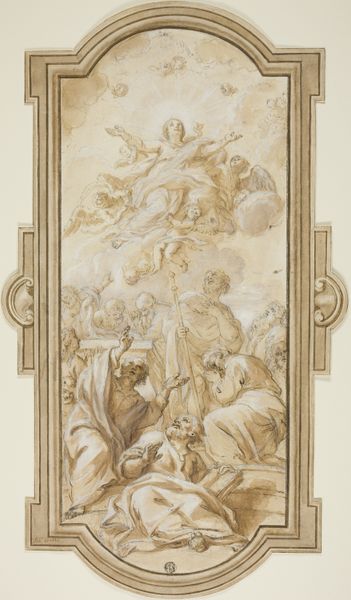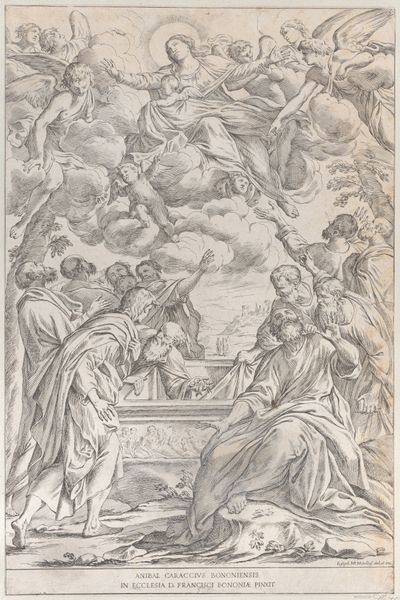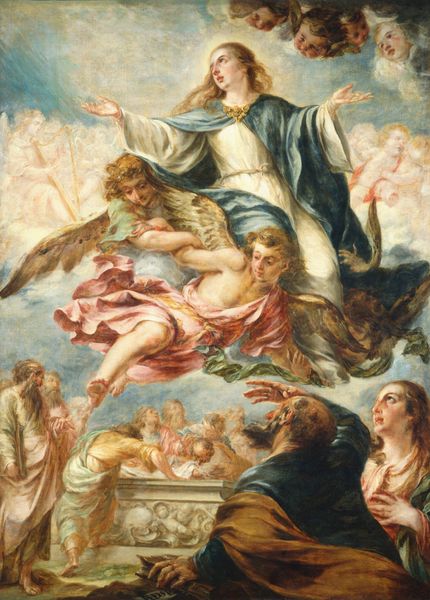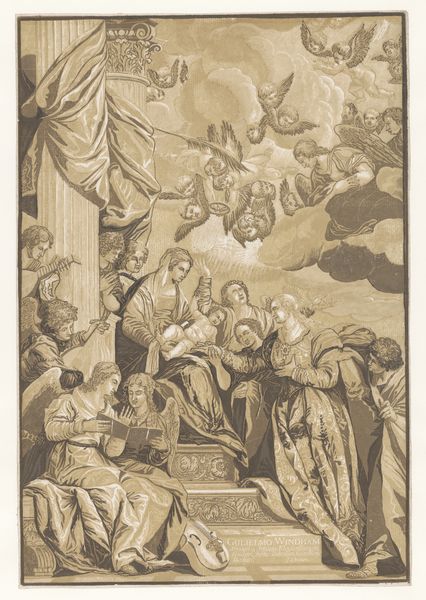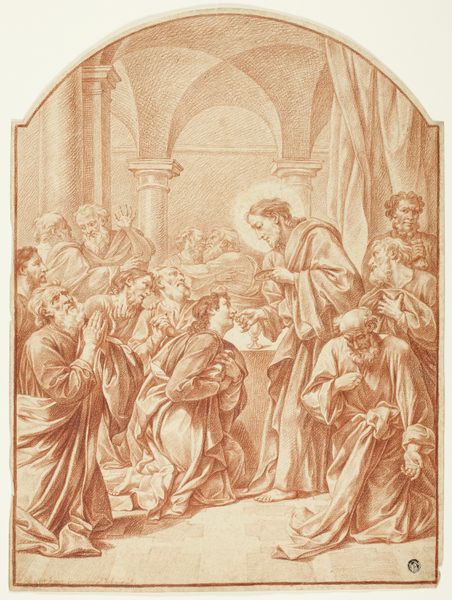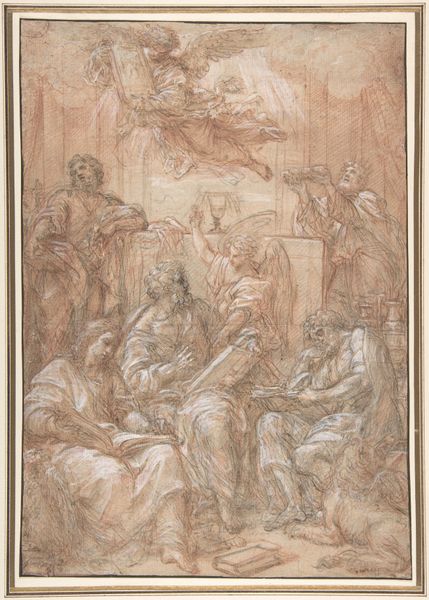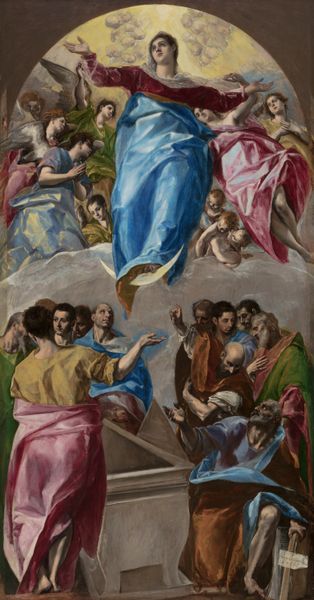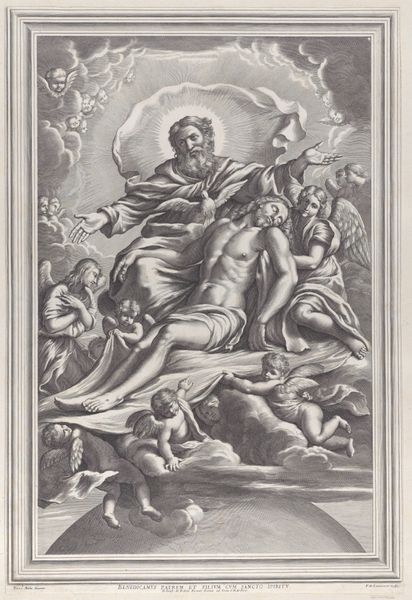
drawing, red-chalk, ink
#
drawing
#
woman
#
allegory
#
baroque
#
red-chalk
#
figuration
#
oil painting
#
jesus-christ
#
ink
#
cross
#
german
#
child
#
history-painting
#
watercolor
#
angel
Copyright: Public Domain
Editor: This is Johann Georg Bergmüller’s "Assumption of the Virgin," made around 1714. It’s a drawing in red chalk and ink, and seeing it now in the Städel Museum, I am struck by how dynamic and crowded the composition is. What can you tell me about how its context influenced the artwork? Curator: It’s crucial to understand this drawing not just as a depiction of a religious scene, but as a product of the Baroque era, which the artist fully embodies. Consider the commission and its likely placement within a church setting. The Catholic church, particularly after the Council of Trent, leveraged art as a powerful tool. Do you notice how the artist positions the viewer in relation to the ascending Virgin Mary? Editor: Well, from our earth-bound perspective, we are looking up, amidst this swirl of figures...almost as if we’re meant to be among those witnessing the miracle! Curator: Exactly! And think about what that meant for the people of the time. Religious art served not merely as illustration but as active engagement. It was meant to inspire awe and devotion and reinforce a certain socio-religious structure. Are you sensing that the artist used it to solidify or reinforce the faith that he and his viewers would be living in? Editor: Yes, the swirling composition and dramatic upward movement draw the eye heavenward and seem to confirm the miracle for those witnessing it. The sheer busyness also reflects that aim for powerful emotion. The religious imagery and the way the Baroque style enhances it reflects the political context. Curator: Precisely. And, importantly, it tells us something about how religious institutions exerted their influence, using art to create not just belief but also a shared public experience. What’s your biggest takeaway now? Editor: It’s helped me realize how images have played an important role in religion as instruments of power to establish and shape collective ideas. Curator: I’d agree. Art like this gives us insight into the past socio-political world, beyond just its aesthetic value.
Comments
No comments
Be the first to comment and join the conversation on the ultimate creative platform.

